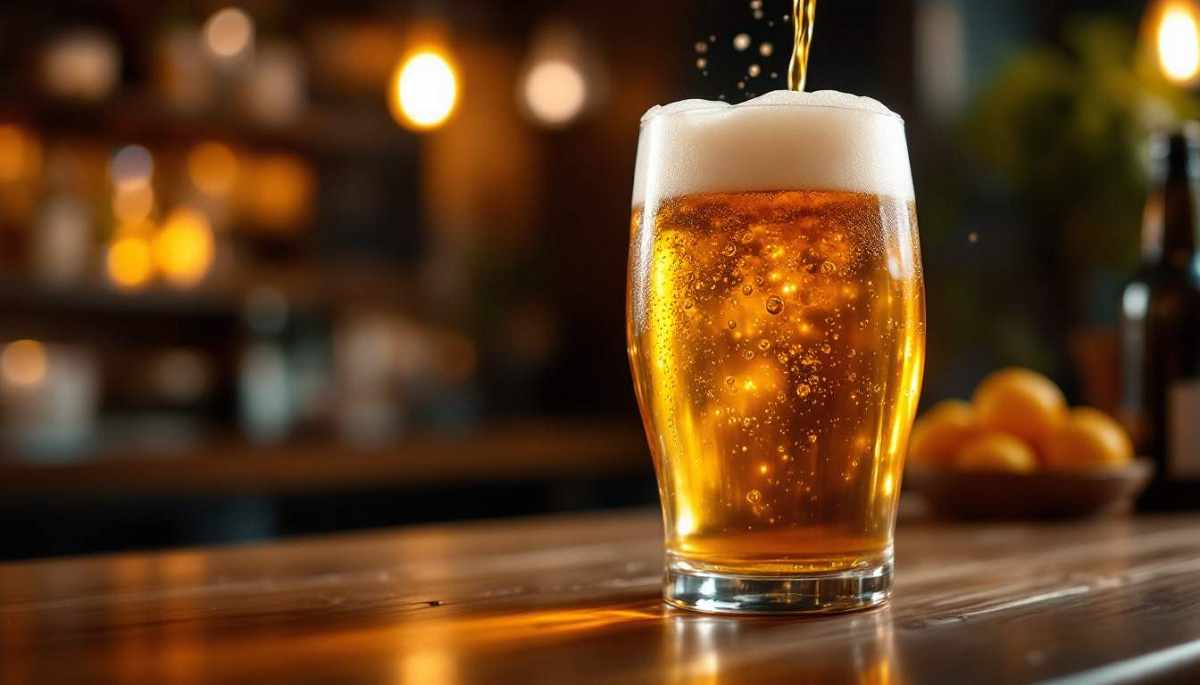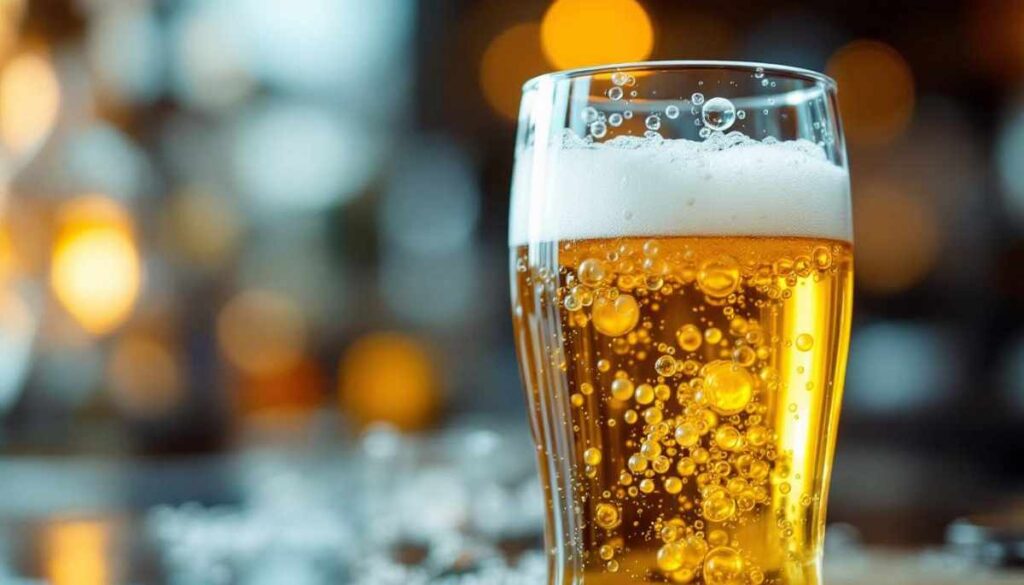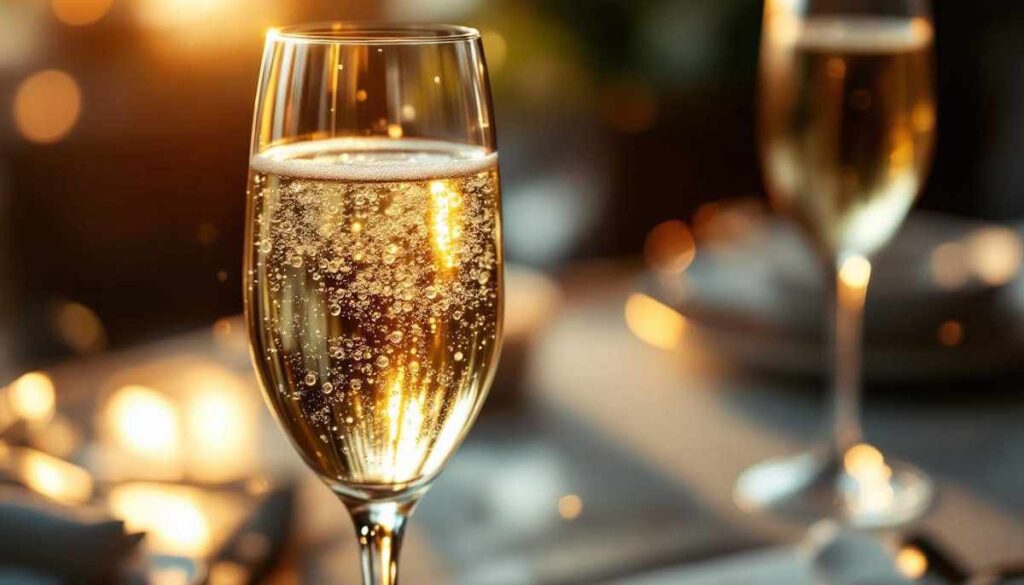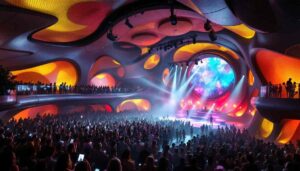
Bubbles forming in a freshly poured beer.
Water is a fundamental component of all beverages, but its transformation into a bubbly delight, especially in beer, is a fascinating topic that merges science, art, and culture. In this article, we delve into the intricate science of carbonation and the sensory experiences bubbles create in beverages, with insights drawn from thorough investigations by The New York Times.
Understanding the Science Behind Bubbles
At the core of bubbly beverages lies the science of carbonation. Carbonation refers to the dissolution of carbon dioxide (CO2) gas into a liquid, leading to the formation of bubbles. This process enhances not only the flavor but also the mouthfeel of drinks. Understanding this phenomenon involves exploring the physical and chemical changes that take place during carbonation.
The Role of Carbonation in Beverages
Carbonation plays a crucial role in how we perceive beverages. The presence of bubbles alters our taste experience, providing a tingling sensation that many people find refreshing. The carbon dioxide reacts with moisture in the mouth, creating carbonic acid, which adds a slight acidity and enhances overall flavor perception.
Moreover, carbonation can enhance the aroma of a drink, as the bubbles release volatile compounds into the air, making it more inviting. This sensory feedback loop between taste and smell is one of the reasons carbonated beverages are so alluring. Additionally, the effervescence can affect the perception of sweetness; for instance, the same level of sweetness may taste different in a carbonated drink compared to a still one, primarily due to the interplay between the bubbles and our taste receptors.
The Chemistry of Bubbles in Water and Beer
The chemistry behind bubbles in water and beer is closely linked to pressure and temperature. When water is under pressure, as in a sealed soda bottle or a keg of beer, CO2 remains dissolved in the liquid. Once the pressure is released—such as when the bottle is opened—the gas escapes, forming bubbles. This release not only transforms the drink’s appearance but also affects its taste.
In beer, the chemistry is even more complex due to the presence of other compounds from the fermentation process. The yeast used in brewing generates additional carbonation, resulting in an effervescent quality that enhances the sensory experience of the beer. The type of yeast and the fermentation conditions can significantly influence the size and stability of the bubbles, which in turn can affect the beer’s mouthfeel and overall enjoyment. Furthermore, the presence of proteins and polyphenols from the malt and hops can stabilize the foam, leading to a rich head that many beer enthusiasts appreciate. This intricate dance of chemistry not only defines the character of the beverage but also plays a pivotal role in the cultural and social experiences surrounding drinking. Each style of beer, from a crisp lager to a rich stout, showcases a unique interplay of carbonation and flavor, inviting exploration and appreciation.
The Process of Making Beer Bubbly
The journey from simple water to a bubbly beer is a meticulous process that involves several key steps. Each stage contributes uniquely to the final product, ensuring that the right level of carbonation is achieved.
The Art of Fermentation
Fermentation is the cornerstone of beer production. During this process, yeast converts sugars found in malted grains into alcohol and carbon dioxide. The CO2 produced during fermentation is crucial, as it contributes to the beer’s natural effervescence.
Brewers can control the fermentation process by adjusting factors such as yeast strain, temperature, and fermentation time to influence the final carbonation level. Some brewers even conduct a secondary fermentation in bottles to achieve a more refined bubble texture. This secondary fermentation can also introduce additional flavors, as the yeast continues to work on any remaining sugars, creating a more complex profile that enhances the overall drinking experience. The choice of yeast strain is particularly important, as different strains can impart unique characteristics to the beer, ranging from fruity esters to spicy phenols, further enriching the flavor and aroma.
The Impact of Temperature and Pressure

Temperature and pressure profoundly influence the carbonation levels in beer. Higher temperatures tend to decrease the solubility of gas, which can lead to a faster release of bubbles. This is why beer served too warm might have a less desirable carbonation quality.
On the other hand, properly managing pressure during storage and serving is essential. Kegs and bottles are often kept under pressure to maintain carbonation until the moment of serving. This balance between temperature and pressure is vital for delivering the perfect bubbly experience. Additionally, the choice of packaging can also affect carbonation retention; for instance, cans tend to maintain pressure better than bottles, which can lead to a fresher taste and more pronounced bubbles when opened. Understanding these nuances allows brewers to tailor their products to specific styles and consumer preferences, ensuring that each pour is as delightful as intended.
The Sensory Experience of Bubbles
Bubbles are not merely a visual phenomenon; they significantly impact the sensory experience of consuming beverages. Understanding how they affect taste, texture, and appearance can deepen our appreciation of bubbly drinks.
How Bubbles Affect Taste and Texture
The sensation of carbonation influences both taste and texture. As we consume a carbonated beverage, the release of bubbles creates a tactile sensation that can enhance or detract from our overall drinking experience. For many, the effervescence adds a layer of excitement, making the drink seem more vibrant and dynamic.
Moreover, the carbonic acid formed when bubbles burst creates a slight tang that can amplify flavors. This effect is often particularly noticeable in craft beers, where unique brewing methods and ingredients can either accentuate or balance the sourness derived from carbonation. The interplay of flavors can lead to a complex tasting experience, where the initial sweetness of a beverage may be countered by the crispness of the bubbles, creating a delightful balance that keeps the palate engaged.
Additionally, the texture of a carbonated drink can evoke memories and emotions, as the fizzing sensation may remind individuals of celebratory moments, such as toasting at a wedding or enjoying a refreshing soda on a hot summer day. This emotional connection can further enhance the overall enjoyment of the beverage, making each sip a nostalgic experience.
The Visual Appeal of Bubbles in Beverages
Visually, bubbles serve to enhance the overall appeal of a drink. The sight of effervescence swirling in a glass can stimulate appetite and intrigue. This visual component is especially important in the world of beer, where intricately designed glasses often showcase the myriad of bubbles rising to the surface.
Furthermore, the delicate foam that forms on top of a freshly poured beer not only acts as a visual cue but also captures aromas, enhancing the drinker’s experience as they take their first sip. The contrast between the golden hues of the beer and the white froth creates an inviting presentation that beckons to be savored. In sparkling wines, the tiny bubbles that dance playfully in the glass can evoke a sense of celebration, as if the drink itself is celebrating the moment with you. The way light refracts through these bubbles can create a mesmerizing effect, drawing the eye and elevating the drinking experience into something truly special.
Moreover, the size and persistence of bubbles can vary significantly between different types of beverages, adding another layer of visual intrigue. For instance, the large, vigorous bubbles of a freshly poured soda differ greatly from the fine, persistent bubbles found in a well-chilled Champagne. This variation not only affects the aesthetic appeal but also hints at the underlying characteristics of the drink, inviting enthusiasts to explore the nuances of each bubbly creation.
The New York Times’ Perspective on Bubbly Beverages
The New York Times has closely examined the intricacies of bubbly beverages, providing insights that highlight both the scientific and cultural aspects of carbonation. Their investigations reveal the multifaceted layers that contribute to our enjoyment of bubbly drinks.
Unveiling the NYT’s Investigation
The publication’s exploration into bubbles has delved into various dimensions, such as historical practices, brewing innovations, and consumer preferences. Their pieces often include interviews with brewers and scientists, shedding light on what makes bubbly beverages so iconic.
This investigative journalism not only informs readers but also invites them to appreciate the artistry behind their favorite drinks. By marrying science with storytelling, The New York Times fosters a deeper connection to the world of carbonation.
Key Findings and Conclusions from the NYT
Among the key findings from their investigations, The New York Times emphasizes the significance of tradition and innovation in the production of carbonated beverages. They note that while age-old methods still hold value, modern technology and experimentation have opened new avenues for creating unique carbonation experiences.
In conclusion, the insights provided by The New York Times remind us that the transformation of water into a bubbly beverage, be it soda or beer, is not just about carbonation; it’s a complex interplay of science, art, and consumer engagement.
Debunking Myths about Bubbles in Beverages
Despite the growing understanding of carbonation, several myths persist regarding bubbles in beverages. Addressing these misconceptions is crucial for informed consumption and appreciation of bubbly drinks.
Common Misconceptions about Carbonation
One common myth is that carbonation is synonymous with fizziness. While carbonation certainly produces fizz, not all carbonated drinks feel the same. The size and persistence of bubbles can vary widely, impacting the perceived texture and taste.
Another misconception is that bubbles only add a visual appeal and do not affect flavor. In reality, the presence of bubbles can significantly alter taste perception, primarily due to the reactions that occur in the mouth and the release of aromas.

The Truth about Bubbles in Water and Beer
Ultimately, understanding the truth about bubbles in beverages allows consumers to engage more meaningfully with the drinks they enjoy. From the science of carbonation to the sensory experiences they create, bubbles contribute to a nuanced appreciation of not just beer and sparkling water but a diverse range of effervescent drinks.
Bubbles are more than mere decorations in drinks; they are a crucial component that enhances flavor, aroma, and the overall drinking experience. Recognizing this enriches our enjoyment and encourages continued exploration in the world of beverages.




